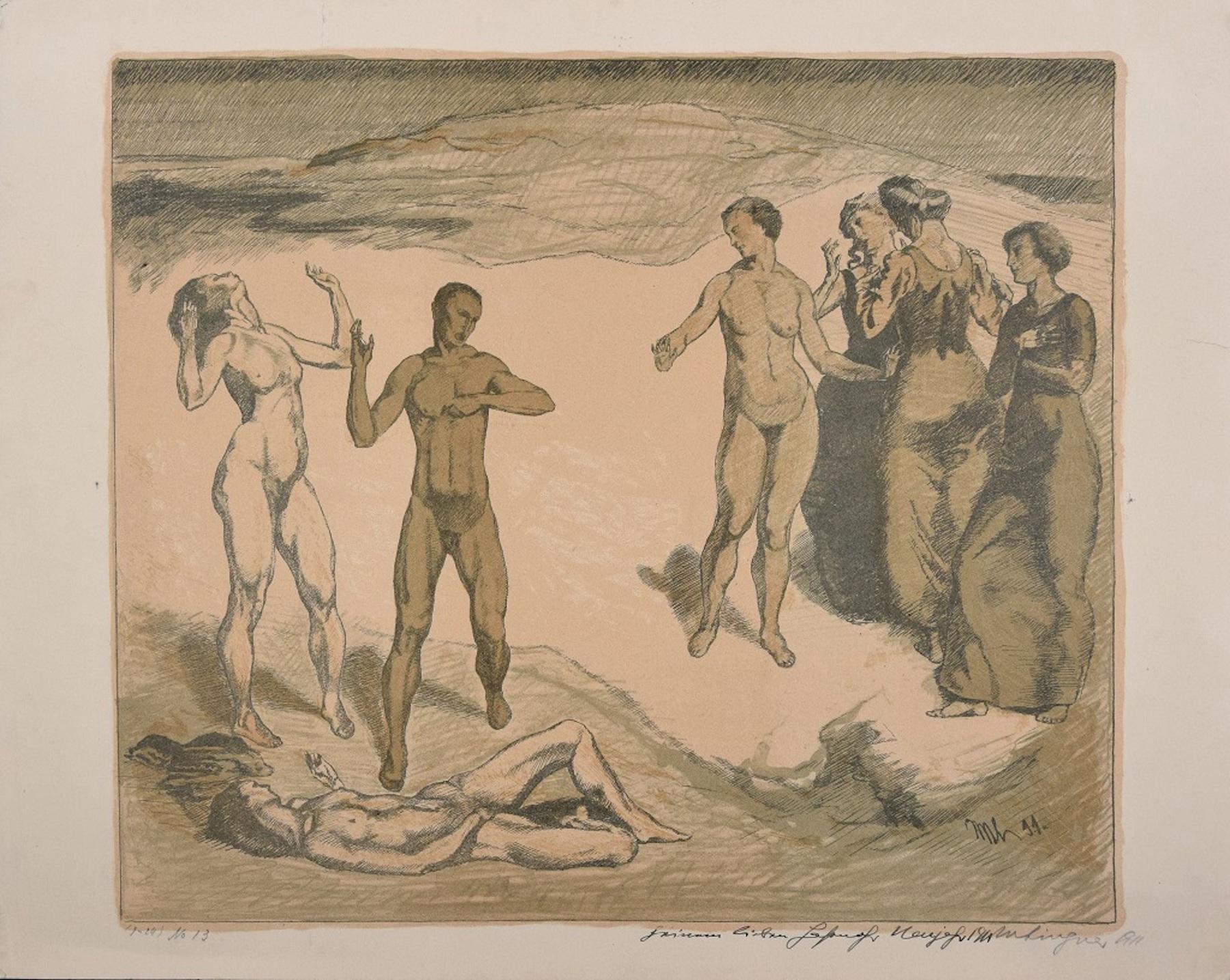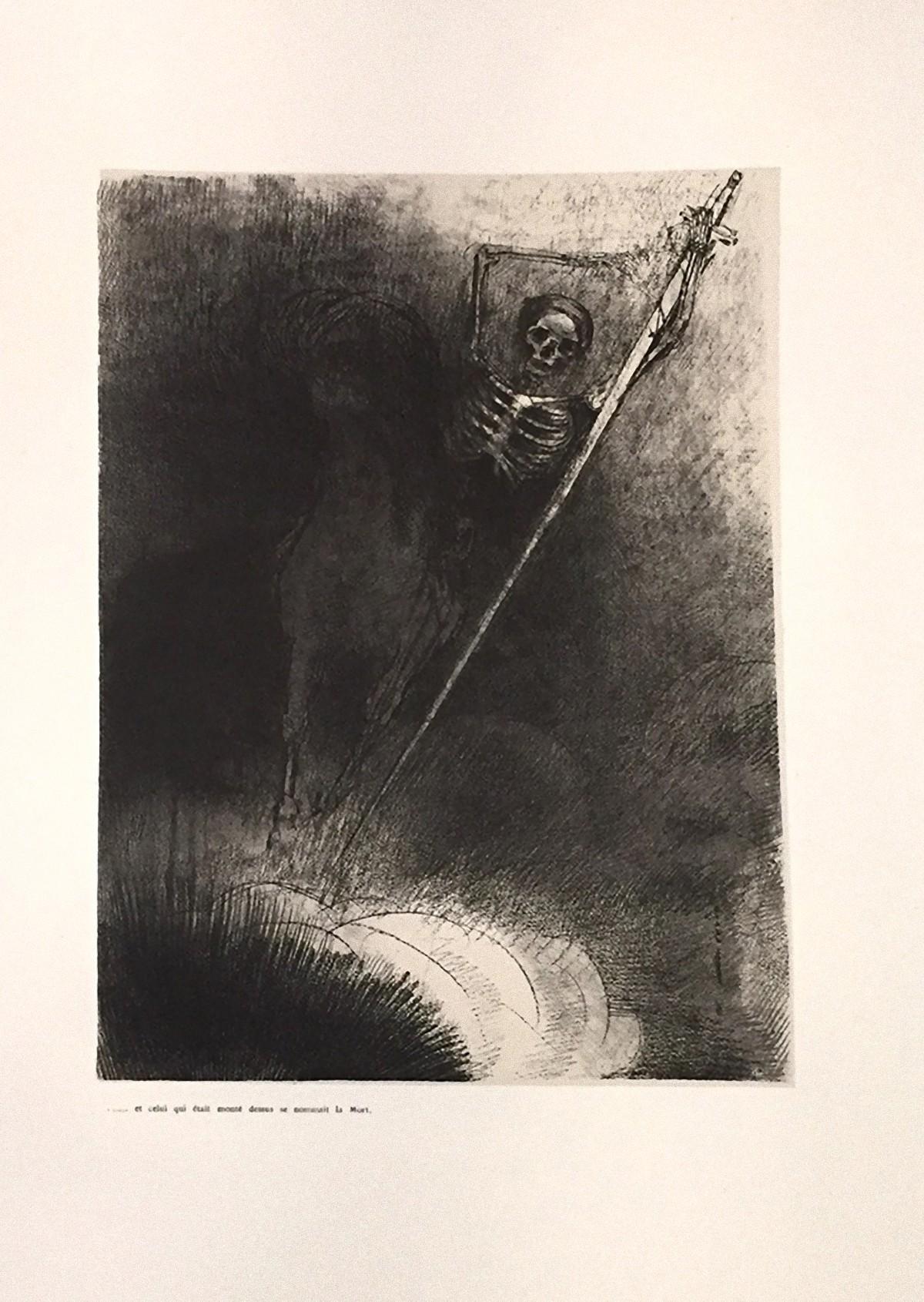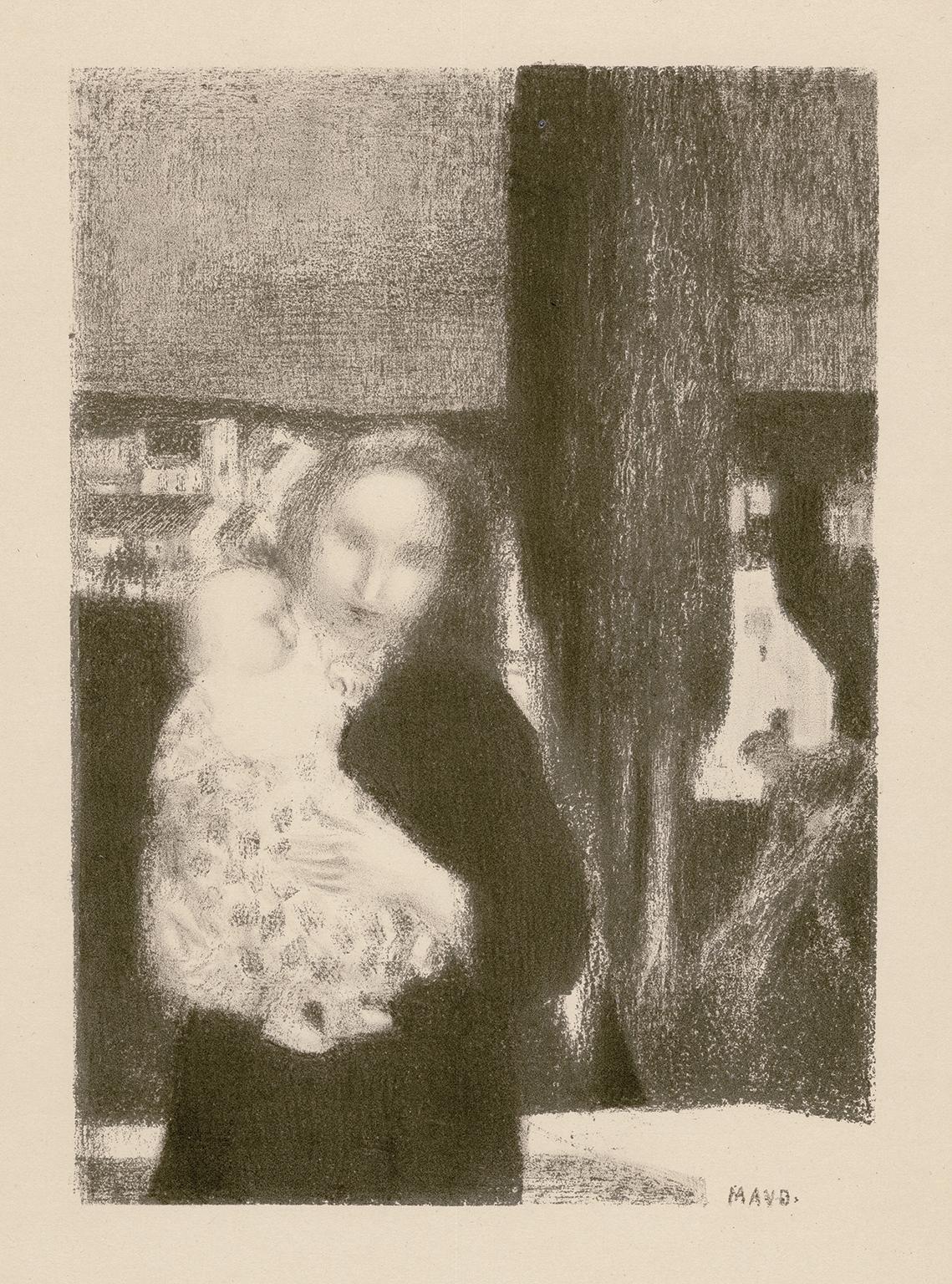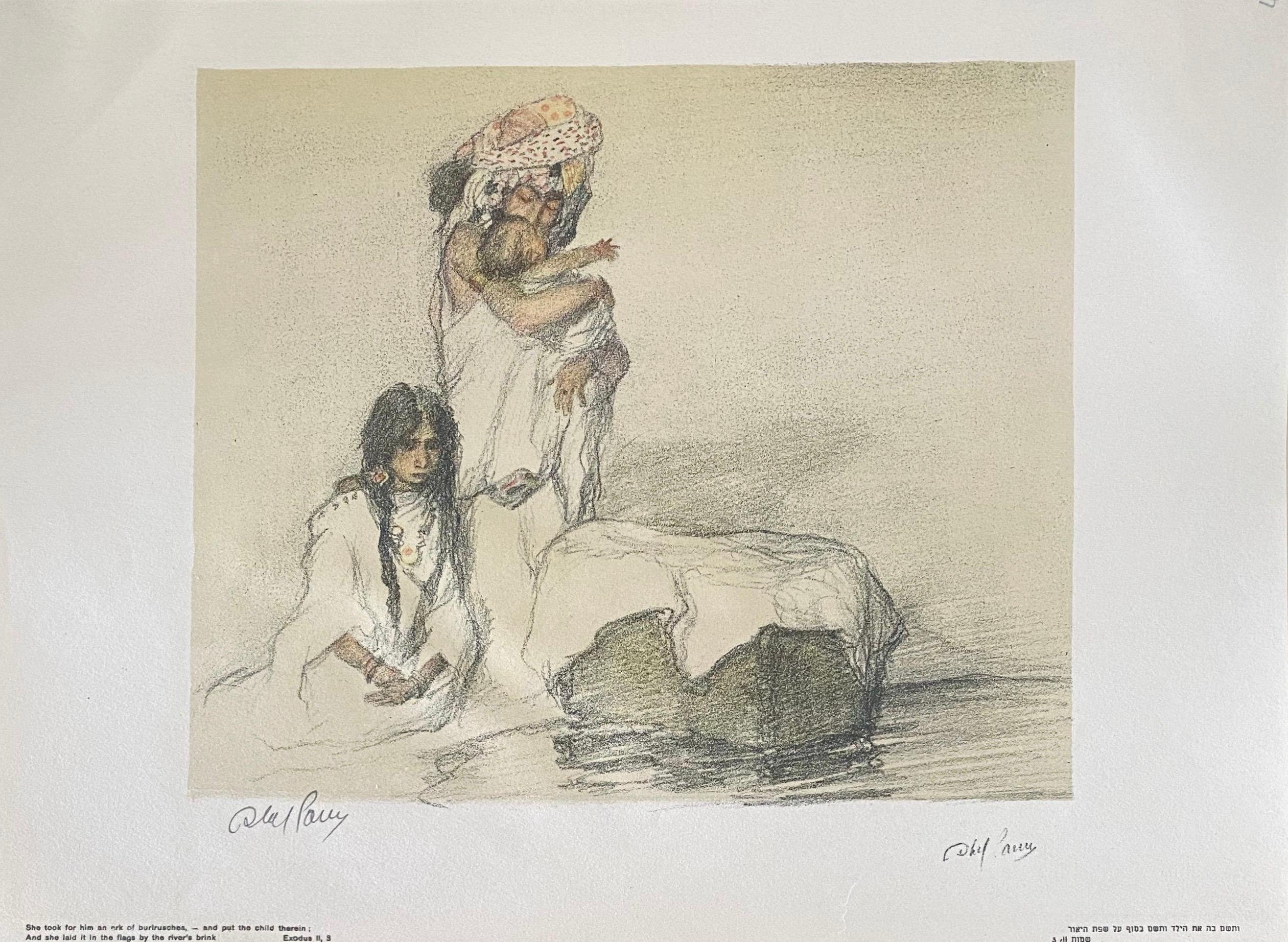Items Similar to Le Fondeur Paris [Steel Worker]
Want more images or videos?
Request additional images or videos from the seller
1 of 4
Eugène CarrièreLe Fondeur Paris [Steel Worker]1900
1900
About the Item
Carriere, Eugene. Le Fondeur, Paris 1900 [Steel Worker], Color lithograph.
Ref: Das Fruhe Plakat 134. 51 x 34 3/4 inches.
Eugène Anatole Carrière (16 January 1849 – 27 March 1906) was a French Symbolist artist of the Fin de siècle period. His paintings are best known for their brown monochrome palette. He was a close friend of the sculptor Rodin and his work influenced Picasso. Some see traces of Carrière's monochrome style in Picasso's Blue Period.
- Creator:Eugène Carrière (1849 - 1906, French)
- Creation Year:1900
- Dimensions:Height: 51 in (129.54 cm)Width: 34.75 in (88.27 cm)
- Medium:
- Movement & Style:
- Period:
- Condition:
- Gallery Location:New York, NY
- Reference Number:1stDibs: LU29227365512
Eugène Carrière
Eugène Anatole Carrière (16 January 1849 – 27 March 1906) was a French Symbolist artist of the fin-de-siècle period. Carrière's paintings are best known for their near-monochrome brown palette and their ethereal, dreamlike quality. He was a close friend of Auguste Rodin and his work likely influenced Pablo Picasso's Blue Period. He was also associated with such writers as Paul Verlaine, Stéphane Mallarmé and Charles Morice. Carrière had great admiration for many of the Old Masters, but in his early work he was mainly influenced by his contemporary Jean-Jacques Henner. He increasingly used a near monochrome brown palette with occasional touches of other colours and a painterly technique somewhat like that of Henner, and by the mid-1880s his work was characterized by a dense, misty brown atmosphere out of which the images emerged.
The Sick Child (1885; Paris, Mus. d’Orsay) is an example of the theme of a mother and her child that Carrière often used and that has come to be regarded as typifying his work.
Carrière occupies an important place in fin-de-siècle Symbolism, which developed in the visual arts from the mid-1880s. The quality of poetic, dreamlike reverie that pervades his work particularly appealed to Symbolist critics such as Charles Morice and Jean Dolent; the latter described Carrière’s art as reality having the magic of dreams. Carrière also frequented the Café Voltaire and was involved in Symbolist theatre, bringing him into the mainstream of Symbolism. By employing a subdued palette, softening the focus and enveloping his figures in a thick, dark atmosphere, as in Maternity (c. 1889; Philadelphia, PA, Mus. A.), Carrière achieved a rarified sense of space, light and colour. His ethereal images have a quality of pervasive stillness.
Carrière’s strong belief in the essential brotherhood of Man led him to consider his family as a microcosm of mankind. Though most of his paintings are of family members or family relationships, his interest in the universal rather than the specific usually resulted in figures without much individuality presented in a formless environment. He also produced a number of portraits, with notable examples being that of the poet Paul Verlaine (1890; Paris, Mus. d’Orsay) and the sculptor Louis-Henri Devillez (1887). Several of his works can be found at the Musée d'Orsay and the Musée Rodin in Paris, the Tate in London and the National Museum of Serbia in Belgrade.
About the Seller
5.0
Vetted Seller
These experienced sellers undergo a comprehensive evaluation by our team of in-house experts.
1stDibs seller since 2015
55 sales on 1stDibs
Typical response time: 15 hours
Associations
International Fine Print Dealers Association
- ShippingRetrieving quote...Ships From: New York, NY
- Return PolicyA return for this item may be initiated within 7 days of delivery.
More From This SellerView All
- Antoine Georges Marie RochgrosseBy Georges Antoine RochegrosseLocated in New York, NYRochgrosse, Antoine Georges Marie. Poems Chantes/Gustave Carpentier /Paris/Henri Tellier, Editeur. 1896. 7 Color lithograph. Das fruhe Plakat 750 (Music Sheet). French painter, pri...Category
1880s Symbolist Figurative Prints
MaterialsLithograph
- BOSBOOM. 1917.Located in New York, NYROLAND HOLST, R.N. (Richard) (1868-1938). “Eere Tentoonstelling Bosboom/ 1817 1917/ Pulchri-Studio ‘s Gravenhage/ 21 Apr[il] 31 Mei”. Color lithograph (pa...Category
1910s Symbolist Figurative Prints
MaterialsLithograph
- PKZ [Hand putting Rose into lapel of Suit].By Hermann BlaserLocated in New York, NYBlazer, Hermann. PKZ [Hand putting Rose into lapel of Suit]. 1936, Color lithograph. On Linen. Blazer was a Graphic Designer who designed posters for the PKZ Dept. store in Swit...Category
1930s Art Deco Figurative Prints
MaterialsLithograph
- Inspecteur Connait La MusiqueLocated in New York, NYOriginal Vintage 1956 Poster La Nouvelle Societe de Cinématographie Present Inspecteur Connait La Musique. Color Lithograph on Linen.Category
1950s Modern Figurative Prints
MaterialsLithograph
- PKZ SalesmanBy Hans FalkLocated in New York, NY1944, Color lithograph. Hans Falk was born in Zurich in 1918. He studied at the Lucerne School of Applied Arts and then completed an apprenticeship as a graphic designer. In 1942...Category
1940s Modern Figurative Prints
MaterialsLithograph
- Kino PlasticonBy Faragó GézaLocated in New York, NYKino Plasticon. Ca 1920s. Budapest. Color lithograph The Hungarian artist and illustrator Geza Farago worked in Budapest as a cartoonist, theatrical costume designer and poster ar...Category
1910s Art Deco Figurative Prints
MaterialsLithograph
You May Also Like
- Composition with Nudes - Hand Colored Lithograph by Max Lingner - 1911By Max LingnerLocated in Roma, ITSymbolic composition with nudes is a wonderful double-colored lithograph on paper realized by the German artist, Max Lingner (Leipzig, 1988- Berlin, 1969). Monogram and date on pla...Category
1910s Symbolist Figurative Prints
MaterialsLithograph
- Nude of a Man - Hand Colored Lithograph by Max LingnerBy Max LingnerLocated in Roma, ITNude of a man is a wonderful double-colored lithograph on paper realized by the German artist, Max Lingner (Leipzig, 1988- Berlin, 1969). Signature and date on plate on lower right...Category
1910s Symbolist Figurative Prints
MaterialsLithograph
- Apocalypse de Saint Jean - Lithographs on Chine collé by Odilon Redon - 1899By Odilon RedonLocated in Roma, ITApocalypse de Saint Jean is a complete suite of 13 b/w lithographs (cover + 12 lithographs) on Chine collé , realized by Odilon Redon. All the lithographs are unsigned, as issued. P...Category
1890s Symbolist Figurative Prints
MaterialsLithograph
- Untitled (Mother and Child)By Maurice DenisLocated in Myrtle Beach, SCMaurice Denis, Untitled (Mother and Child), lithograph, 1897, edition not stated. Signed in the stone, lower right. Annotated in linotype 'MAURICE DENIS, ORIGINAL LITHOGRAPHIE PAN III' in the lower left sheet corner. A fine, atmospheric impression, in warm, dark gray ink, on buff wove paper, with full margins (2 1/2 to 1 3/4 inches); a small discoloration in the bottom left sheet corner, otherwise in good condition. Image size 8 5/8 x 6 7/8 inches; sheet size 13 7/8 x 10 5/8 inches. As published in 'Pan', the leading German magazine of the period devoted to art and literature. Matted to museum standards, unframed. Collection: Los Angeles County Museum of Art. Reproduced: German Expressionist Prints...Category
1890s Symbolist Figurative Prints
MaterialsLithograph
- Abel Pann Israeli Bezalel School Lithograph Judaica Biblical Print Jewish ArtBy Abel PannLocated in Surfside, FLAbel Pann (1883–1963) was a European Jewish painter who settled in the Talpiot neighborhood of Jerusalem in the early twentieth century and taught at the Bezalel Academy of Art under Boris Schatz. Abba Pfeffermann (later Abel Pann), born in Latvia or in Kreskowka, Vitebsk, Belarus, was a European Russian Jewish art...Category
Mid-20th Century Symbolist Figurative Prints
MaterialsLithograph
- Abel Pann Israeli Bezalel School Lithograph Judaica Biblical Print Jewish ArtBy Abel PannLocated in Surfside, FLAbel Pann (1883–1963) was a European Jewish painter who settled in the Talpiot neighborhood of Jerusalem in the early twentieth century and taught at the Bezalel Academy of Art under Boris Schatz. Abba Pfeffermann (later Abel Pann), born in Latvia or in Kreskowka, Vitebsk, Belarus, was a European Russian Jewish artist who immigrated to Ottoman Palestine and settled in Jerusalem. He was married to Esther Nussbaum. Pann's youngest son was killed in the 1947–1949 Palestine war. After that loss, he turned to painting scenes of the Holocaust. He died in Jerusalem in 1963. Pann studied the fundamentals of drawing for three months with the painter Yehuda Pen of Vitebsk, who also taught Marc Chagall. In his youth, he traveled in Russia and Poland, earning a living mainly as an apprentice in sign workshops. In 1898 he went south to Odessa, where he was accepted into the Academy of Fine Arts. In 1903, he was in Kishinev, where he documented the Kishinev pogrom with drawings; an effort that is thought to have contributed to his self-definition as an artist who chronicles Jewish history. Still in 1903, he moved to Paris, where he rented rooms in La Ruche, a Parisian building (which still exists) where Modigliani, Chagall, Chaim Soutine and other Jewish artists also lived. Pann studied at the French Academy under William-Adolphe Bouguereau. He earned his living primarily by drawing pictures for the popular illustrated newspapers of the era. In 1912, Boris Schatz, founder and director of the Bezalel Academy of Arts and Design visited Pann in Paris and invited him to come work in Jerusalem. In 1913, after traveling in Southern Europe and Egypt, Pann arrived in Jerusalem, where he had decided to settle for life. Pann went to see Schatz and it was decided that he would head the painting department at the Bezalel Academy for several months while Schatz embarked on an extensive overseas fund-raising trip. According to Haaretz art critic Smadar Sheffi, a work form this period with the simple title "Jerusalem" shows a cluster of buildings at sunset "with a sky in blazing orange." The painting is "more expressive and abstract that is typical of his work," and Sheffi speculates that "the encounter with the city" of Jerusalem was a "strong emotional experience" for the artist. Pann returned to Europe to arrange his affairs before moving permanently to the British Mandate of Palestine, but was caught on the continent by World War I. Pann's wartime paintings would prove to be among "the most important" of his career. He made many posters to support the French war effort. He also made a series of fifty drawings showing the extreme suffering of Jewish communities caught in the fighting between Germany, Poland and Russia. Art critic Smadar Sheffi regards them as "the most important part of his oeuvre." These "shocking" drawings put modern viewers in mind of depictions of the Holocaust. Pann's drawings were intended as journalistic documentation of the fighting and were successfully exhibited in the United States during the War. According to Pann's autobiography, the Russians, who were allied with the French, refused to allow a wartime exhibition of the drawings in France. According to The New York Times, the drawings were published in Paris during the war, but the government intervened to block their distribution on the grounds that they "reflected damagingly upon an ally" (Russia). Upon his return to Jerusalem in 1920, Pann took up a teaching position at the Bezalel Academy and wrote that he was about to embark on his life-work, the painting and drawing of scenes from the Hebrew Bible. He returned briefly to Vienna, where he met and married Esther Nussbaum and purchased a lithographic press, which the couple brought home to Jerusalem. Pann began work on a series of lithographs intended to be published in an enormous illustrated Bible, and although that series was never completed, he is widely admired for the series of pastels inspired by Bible stories that he began in the 1940s. The iconography of these works is linked to the 19th century orientalism. He was part of a movement of contemporary Jewish artists interested in Biblical scenes, including Ephraim Moses Lilien...Category
Mid-20th Century Symbolist Figurative Prints
MaterialsLithograph






